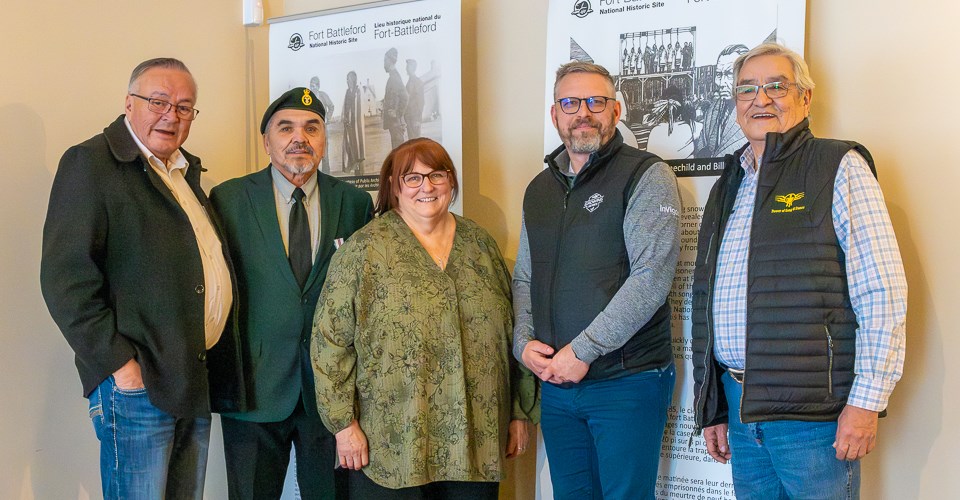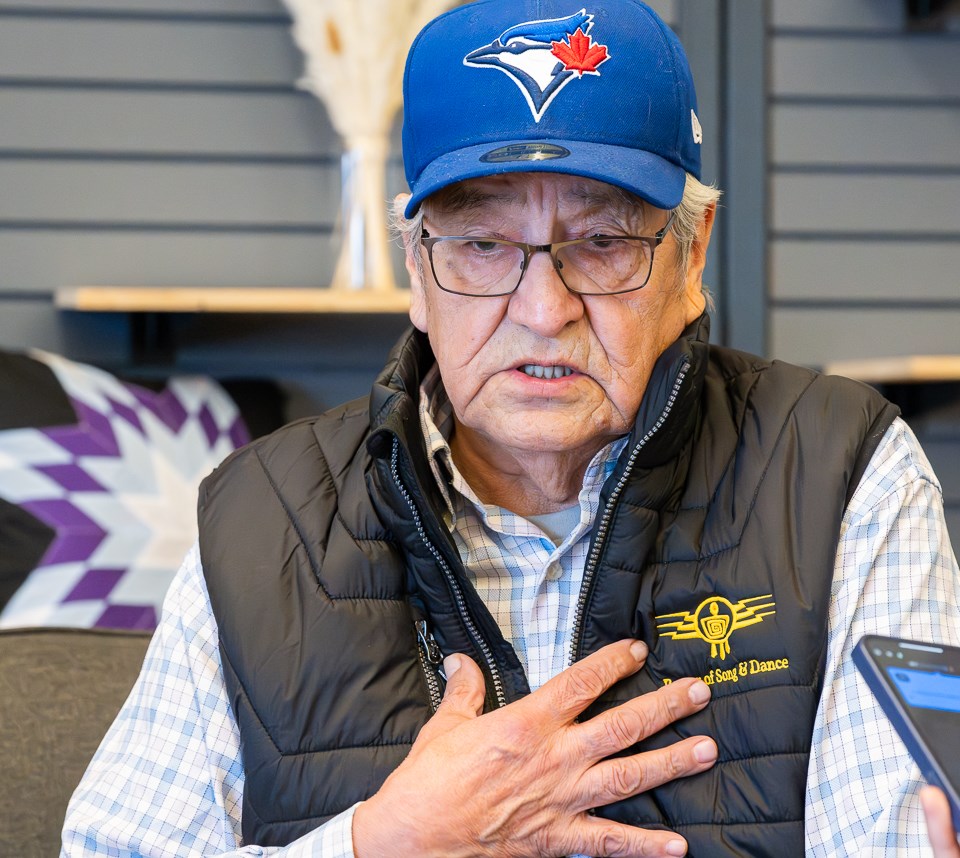BATTLEFORD — Indigenous leaders gathered last Wednesday at Fort Battleford not just to remember the past, but to heal from it — and to share those stories with the children.
With a feast and pipe ceremony, they reflected on painful moments from the past, including the 1885 mass hanging, the brutal legacy of residential schools, and the ongoing challenges faced by Indigenous people in Canada.

Elder from the Poundmaker First Nation Eric Tootoosis was invited to the ceremony to share the oral accounts of the events that led to the 1885 mass hanging with the audience.
“The truth of Wandering Spirit is that he survived, lived to an old age, and dispersed into different communities," said Tootoosis.
Historical wounds and the mass hanging of 1885
“The whole story is that the incident was provoked by the abuse of the agents on Indigenous people, especially the sexual abuse of women and girls,” he explained. “They had to give themselves up to get provisions from the agents... In one instance, a prominent leader’s daughter was raped by an agent, which led to a gathering of people to take action.”
When the government’s agents came to Battleford, one of the leaders selected the agent he wanted to target.
“Agent Quinn was killed... they never looted. It was the settlers who looted the trading store,” Tootoosis continued.
This violent response, rooted in frustration over years of mistreatment, led to the wrongful execution of several individuals in what is now seen as a gross miscarriage of justice.
One of those targeted, Wandering Spirit, had a relative replace him on the hanging list, he said. Wandering Spirit later lived a full life, and his story became a symbol of survival amidst tragedy.
"These stories were not readily told, but we tell them now as survival stories — surviving war, surviving assault, and protecting what belongs to the unborn,” said Tootoosis.

Truth-telling and the fight for treaty rights
For Tootoosis, understanding his community’s history came a long way from one perspective to another.
“When I first heard them (the history), it was from an educational, non-Indigenous perspective, but then elders began sharing the truth, and that uplifted me. (That is what) made me feel uplifted and grateful that I'm still here.”
Sharing these truths is not just about remembering the past, he said, but about ensuring future generations understand the deep-rooted struggles of their ancestors.
“And today, we continue that fight for survival. We have a unique story of survival, and we still haven’t been paid as treaty people."
For decades, the Indigenous community has been fighting for fair compensation for the natural resources extracted from their lands.
"We agreed to live by the treaty, to share the land, but we haven’t received a fair share for the resources taken," Tootoosis continued. "That is a continuing struggle, and it’s one that we need to address with future generations."
Healing through ceremony
One of the powerful tools for healing, Tootoosis said, is ceremony.
"Today is for us to heal, to give thanks through prayer and to commemorate those who made this reality for us to be here today," he said. "We don’t proceed without ceremony... it’s part of our tradition to honour the past and our ancestors."
Donna Kahpeaysewat joined the ceremony with her family.
"History is what inspires me, and it brings me here today. We cannot let our history die…Our ancestors were the first ones to step on this land, and that history is ours to carry forward.
“At home, I talk about history with my grandkids, and that inspires me to come here to feast and learn from the elders. That's my passion.”
Kahpeaysewat, a survivor of the Day School system who single-parented all her life, said teaching her children about their heritage has been a big part of her parenting.
"What's amazing is that you're accepting an Indigenous person. When I was in high school, there was only a little bit of discussion about our people.”
Traditional dancing was a passion of hers, and at 64, Kahpeaysewat is proud to have picked it up again.
“After we adopted a son from Africa, he pointed out that in other countries, nobody knows we exist as First Nations people,” she said. “But now, nationally and internationally, people are learning about us. One day, if I have the chance, I'd love to dance our traditional heritage in another country."

‘The real reconciliation’
While the pain of the past remains, leaders like David Pelletier, Indigenous veteran and president of the Saskatchewan First Nations Veterans Association, are working to bridge the divide between Indigenous and non-Indigenous communities.
"I’m here (attending the ceremony) to try and pull two communities together,” Pelletier said. “It’s time we realize that we live together in this country. We need to unite, not divide.”
Pelletier added his years in the military have opened his eyes to understand and live towards “the real reconciliation.”
“I'm also the mayor of Paynton now, so I'm stuck in between two cultures – the white culture and the native culture. And right now what I'm doing is I'm trying to pull those cultures together.”
And today served as a “stepping stone,” he said, adding that tourism can lead the way to unite the two communities.
"They're going to come and see, this is what the non-native people did to the native people. This is what the non-native people want with the native. This is what the native people want to accomplish with the non-native people.
“And it's something that they can build together,” Pelletier said. “[Tourism] opens us to the world, our situation, the good and the bad, the white situation, the good and the bad. It opens it up to the world. They come and see the truth here. They won't see the fantasized cowboys in Indian western movies. You'll see the real people.”

Honouring the past, securing the future
The struggle for reconciliation is far from over, and community advocates like Tootoosis, Pelletier, and Kahpeaysewat are determined to continue the work of healing and teachings of peace, respect, and unity.
"We must honour the land, the sky, the birds, and the animals," Pelletier said. "That’s where we come from, and we must share that wisdom. It’s not about drugs or violence; it’s about peaceful coexistence with Mother Nature."
"I participated in our ceremonies, and my wish and prayer is that all nations come together,” said Kahpeaysewat. “Because it’s tiring and negative to see how divided we are. Politics divides nations, but the non-political part is that no one wants to be divided. So that is my mission."
“Today is for us to heal from that spirit of the ceremony, to take that away and make this into and now creating and sharing the stories of survival,” Tootoosis said.
With the Fort’s help, banners will be ready for the public by the end of March 2025. There will be six banners displayed inside the room and two outside. These banners will largely focus on the 1885 mass hanging of eight men and share the history from the First Nations perspective.
“We will now have the right to speak of it this year, and as we move on improving relations with the Indian and non-Indian community and making (local) tourism be a part of the tourism industry,” Tootoosis concluded.



